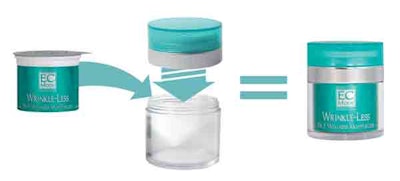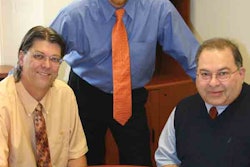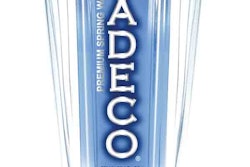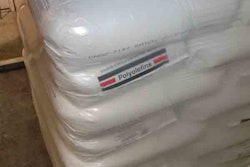Malibu Wellness, Inc. continues to take pride in staying in front of the curve when it comes to healthy skin care. So it’s no surprise that the company is pioneering a reusable pack in the U.S. cosmeceutical market just when sustainable packaging has become so prominent.
The packaging for Malibu’s EC Mode skin-care products does much more than address an environmental call. The attractive container offers functional, economic, and environmental appeal for consumers at retail, and for salon, spa, and medical professionals. The product/packaging combination represents an ambitious effort by the Malibu, CA-based firm, which reintroduced EC Mode in the new packaging last February.
Used to treat skin-care challenges such as acne, rosacea, and inflammation, the EC Mode products are marketed to healthcare professionals for both women and men, in a clear styrene acrylonitrile (SAN) container/jar from Yon Woo Co. Ltd. (www.yonwookorea.com). The jar’s threaded silver-colored closure houses an unusual pump that dispenses product without the use of a more traditional dip tube. A threaded translucent overcap fits over the jar closure.
Fitting into that outer jar is a white injection-molded polypropylene jar, also from Yon Woo, that holds the product. A wraparound label on the jar is printed with the following dispensing instructions: “Remove overcap. Press down on top of container using index and middle finger on each side of the center simultaneously.”
Once product is completely evacuated, the user discards the inner pack. He or she then can buy a cylindrical PP refill pack and put it into the SAN container and rethread it with the silver closure that houses the pump device. A foil lid is sealed to the top of the refill pack. The consumer discards the foil before placing the refil pack in the outer SAN container.
“In the traditional pump system, air that is between the liquid (gel or cream) inside and the top of the container remains in the container for the life of the product,” explains Tom Porter, founder, CEO, and product developer of Malibu Wellness. He says “the no dip-tube dispensing pump does not use air from within the container to dispense product. In our ‘airless’ system, any air pocket that exists after the product is filled is removed by priming the pump, and no air enters the product after the air pocket is removed.”
Malibu Wellness fills product on any of four lines at its Mid-America Manufacturing/Distribution Center in Indianapolis. That’s done on piston-filling equipment from A Packaging Systems (www.apackaging.net). Pressure-sensitive, metallized polypropylene labels in roll form are supplied by Label Tech (www.labeltechin.com) and applied to the inner PP container on a wraparound labeler from Take-A-Label (www.take-a-label.com).
“To my knowledge,” Porter says, “we were the first to use this system where the customer buys a package with the product inside a refillable pack. Then when they want to purchase it again, rather than buying the SAN container again, they just buy a polypropylene refill pack. It has a foil liner, much like a yogurt cup. So, rather than throwing away the SAN container, the only thing they discard is the inner jar and foil lid.”
Porter says that is not only an environmental benefit, but also an economic one. “The client pays about half the price, and there’s less product waste because the airless system allows you to use the last drop of product.”
Dispensing differentiation
Before introducing the new packaging, Malibu Wellness sold EC Mode products in a glass bottle manufactured in Italy. Porter says, “It offered no differentiation from competitive products. It was a traditional pump with a dip tube, so it was not innovative. Cost was part of our concern as well, as was the fact that we could only screen-print it and we couldn’t label it effectively because of its shape. The suppliers were not flexible and required high minimum orders. We also found that the process of labeling, due to the container shape and materials, caused an odor that we never did understand and could not remedy.”
EC Mode’s new container’s dispensing benefits far surpass its predecessor. “Skin-care professionals, our target market for these products, are taught to always maintain one hand on the client/patient when possible,” Porter says. “This new package allows them to reach with one hand and depress the top of the inner container to dispense the product into that same hand.
“Also,” he adds, “many seniors with coordination issues had a challenge picking up, pumping, and dispensing product from the original glass container. This container allows the new package to remain on the counter for the entire process, so that it takes only one hand and little or no strength or coordination to dispense the product.”
The previous container’s limitations underscores why the company wanted to make a packaging change. Yet with sustainable packaging such a hot topic, why not source-reduce and use a single container?
Porter responds, “If the customer had to buy another outer container every time, it would be very expensive and no longer be economically friendly because they’d have to use more material.”
Another point, says Porter, is that Malibu Wellness “has plenty of competition. This container differentiates our product because I believe we are the only company with a refill system. And the airless system is unique in our market.”
Further benefits
The 10-product EC Mode line is made up of all 50-mL creams and gels that fall under four categories: serums, moisturizers, cleansers, and moisture enhancers. Porter says products sell nationwide, at prices ranging from $11 for some of the refills, up to $50 for a new container of product.
“The new container came out in February after preliminary testing in Washington and Oregon, and at some trade shows,” Porter recalls. “It’s been very well received by professionals. We sell products through a customer called Beauty Systems Group which distributes them to professional salons and spas throughout the U.S.”
No refrigeration is necessary for the EC Mode products, which have a two-year shelf life. “Stability is a concern due to the many ingredients used in cosmeceuticals. When you put them in liquid form, they can break down over time, especially some vitamins. Vitamin C, for example, breaks down through a six-stage process and turns to a sugar. Then it may not provide the benefit. Shelf life is a very important issue.”
Economic comparisons
Asked about the economics of the new vs old container, Porter responds, “The cost of the glass container and pump was less than the total cost of the components of the outer jar, inner jar, lid, and overcap and pump. However, due to the minimum requirements of the [glass container’s] screen printing, the cost to introduce new ‘flavors’ became high—and risky—as we could be stuck with large quantities of empty containers if a product did not repeat [sell] as well as expected.
“The cost of the label for the inner jar is minimal. Also, the cost of the labeled refill is significantly less than the cost of the glass container, allowing us to sell the refills to our customers for much less money, so everyone wins,” he says.
Porter credits the new packaging with much of EC Mode’s early success in the market. “From my perspective, the packaging has helped us build sales. It’s being purchased much faster than it was in the previous container. I believe this packaging will help us get into more high-end spas and doctor offices. It also gives us the potential to use it for private-label products for medical professionals, which is something that has been requested of us. We can use the same technology, and we’re capable of producing three million of these a week. The container gives Malibu Wellness more flexibility.”

























